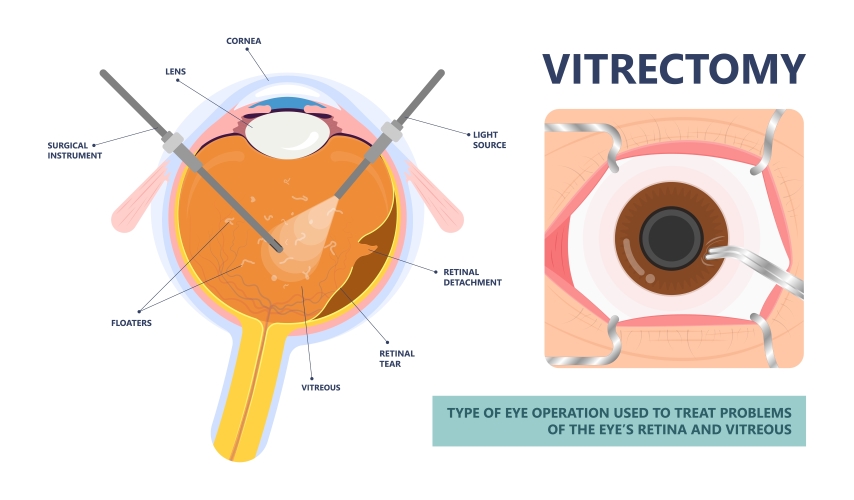What Is Vitrectomy?
Vitrectomy is a type of eye surgery that treats disorders of the retina and vitreous. Your ophthalmologist may recommend vitrectomy surgery to treat the following eye problems:

- Diabetic retinopathy, where there is bleeding and scar tissue
- Some retinal detachments
- Infection of the eye
- Severe eye injury
- Wrinkling of the retina (macular pucker)
- Macular hole (partial loss of vision for fine details)
- Certain problems after cataract surgery
The Procedure
The length of the operation varies from one to several hours, depending on your condition. In certain situations, your ophthalmologist may do another surgical procedure at the same time, such as repairing a detached retina or removing a cataract.
Your ophthalmologist does the operation while looking into your eye with a microscope. Various miniature instruments are placed into the eye through tiny incisions in the sclera (white part of the eye).
After Surgery
You can expect some discomfort after surgery. You will need to wear an eye patch for a short time. Your ophthalmologist will prescribe eye drops for you and advise when to resume normal activity.
What Are The Risks?
All types of surgery have certain risks. Some of the risks of vitrectomy are infection, bleeding, retinal detachment, poor vision, high pressure in the eye and cataracts. However, the risks are less than the expected benefits to your vision.
How Much Will Your Vision Improve?
Your vision after surgery will depend on many variables, especially if your eye disease caused permanent damage to your retina. It is best to discuss with your ophthalmologist how much improvement in your eyesight is possible.

